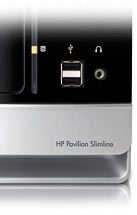New innovations in computing technologies and we cover all that matters, from iPhones to cool laptops and so much more. Keep it locked! New PC Revolution.

As of 2009, a PC may be a desktop computer, a laptop computer or a tablet computer. The most common operating systems for personal computers are Microsoft Windows, Mac OS and Linux, while the most common microprocessors are x86-compatible CPUs, ARM architecture CPUs and PowerPC CPUs. Software applications for personal computers include word processing, spreadsheets, databases, Web browsers and E-mail clients, games, and myriad personal productivity and special-purpose software. Modern personal computers often have high-speed or dial-up connections to the Internet, allowing access to the World Wide Web and a wide range of other resources.

A PC may be a home computer, or may be found in an office, often connected to a local area network (LAN). This is in contrast to the batch processing or time-sharing models which allowed large expensive systems to be used by many people, usually at the same time, or large data processing systems which required a full-time staff to operate efficiently. While early PC owners usually had to write their own programs to do anything useful with the machines, today's users have access to a wide range of commercial and non-commercial software which is provided in ready-to-run form.

The video card - otherwise called a graphics card, graphics adapter or video adapter - processes and renders the graphics output from the computer to the computer display, also called the visual display unit (VDU), and is an essential part of the modern computer. On older models, and today on budget models, graphics circuitry tended to be integrated with the motherboard but, for modern flexible machines, they are supplied in PCI, AGP, or PCI Express format. When the IBM PC was introduced, most existing business-oriented personal computers used text-only display adapters and had no graphics capability. Home computers at that time had graphics compatible with television signals, but with low resolution by modern standards owing to the limited memory available to the eight-bit processors available at the time.
